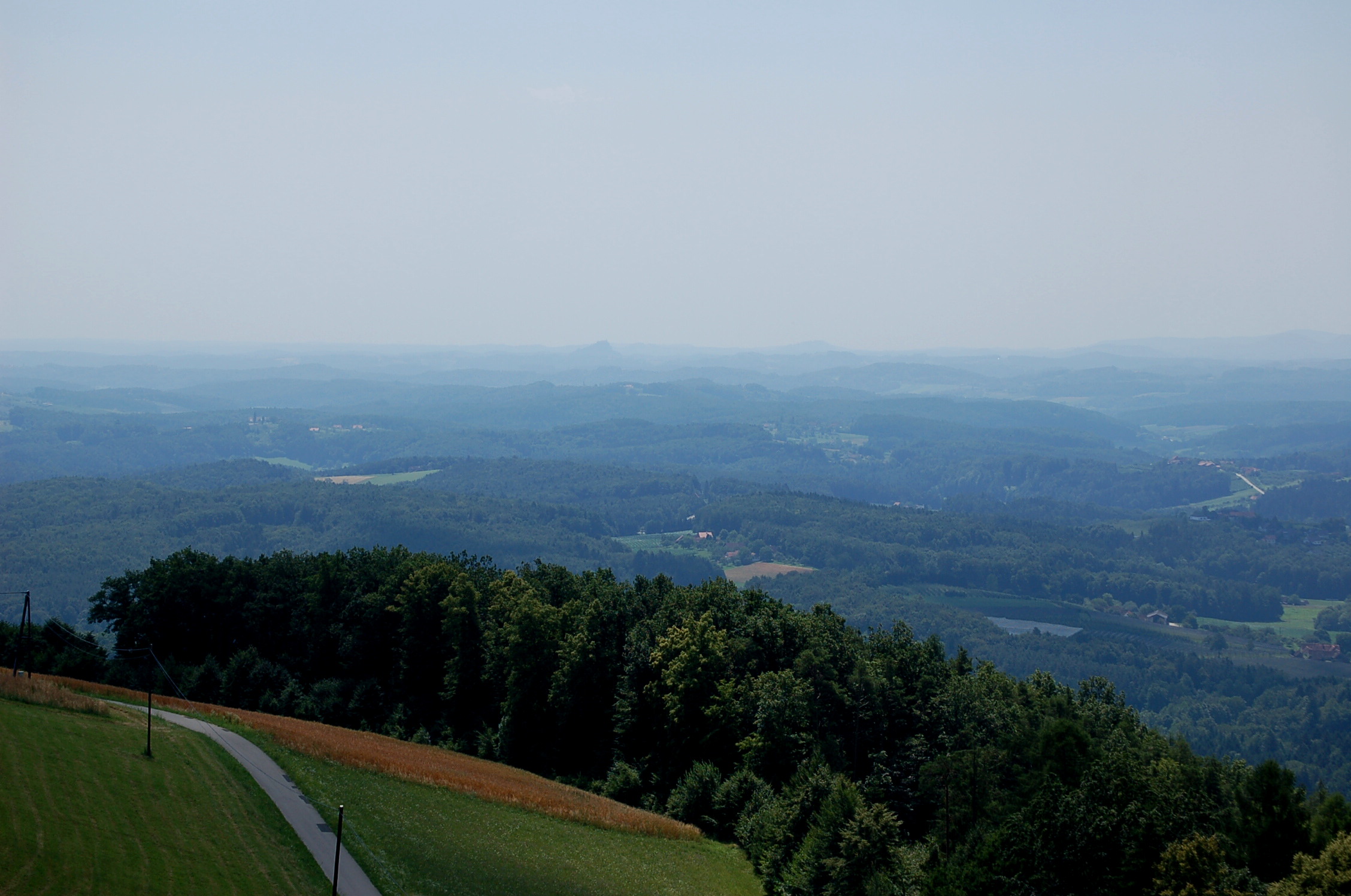Interfluve on:
[Wikipedia]
[Google]
[Amazon]
 An interfluve is a narrow, elongated and plateau-like or ridge-like landform between two
An interfluve is a narrow, elongated and plateau-like or ridge-like landform between two
''Sicherung und Entwicklung der charakteristischen Riedellandschaft zwischen Dürrer Aurach und Aubach''
at www.land-oberoesterreich.gv.at. Retrieved 1 Jan 2015
* the majority of the
valley
A valley is an elongated low area often running between hills or mountains, which will typically contain a river or stream running from one end to the other. Most valleys are formed by erosion of the land surface by rivers or streams ove ...
s.Leser, Hartmut, ed. (2005). ''Wörterbuch Allgemeine Geographie'', 13th ed., dtv, Munich, p. 766, . More generally, an interfluve is defined as an area of higher ground between two rivers in the same drainage system.
Formation
These landforms are created by earth flow ("solifluction
Solifluction is a collective name for gradual processes in which a mass moves down a slope ("mass wasting") related to freeze-thaw activity. This is the standard modern meaning of solifluction, which differs from the original meaning given to it ...
"). They can also be former river terrace
Fluvial terraces are elongated terraces that flank the sides of floodplains and fluvial valleys all over the world. They consist of a relatively level strip of land, called a "tread", separated from either an adjacent floodplain, other fluvial te ...
s that are subsequently bisected by fluvial erosion
In geography and geology, fluvial processes are associated with rivers and streams and the deposits and landforms created by them. When the stream or rivers are associated with glaciers, ice sheets, or ice caps, the term glaciofluvial or fluviogl ...
. In cases where there is a deposit of younger sedimentary beds ( loess, colluvium
Colluvium (also colluvial material or colluvial soil) is a general name for loose, unconsolidated sediments that have been deposited at the base of hillslopes by either rainwash, sheetwash, slow continuous downslope creep, or a variable combinati ...
) the interfluves have a rounder and less rugged appearance. A consequence of interfluve formation is the so-called "interfluvial landscape."
Occurrence of interfluvial landscapes
* In SouthBurgenland
Burgenland (; hu, Őrvidék; hr, Gradišće; Austro-Bavarian: ''Burgnland;'' Slovene: ''Gradiščanska'') is the easternmost and least populous state of Austria. It consists of two statutory cities and seven rural districts, with a total of ...
and in the East Styrian Hills The East Styrian Hill Country or East Styrian Hills (german: Oststeirisches Hügelland or ''Oststeirisches Riedelland''), is a rolling, hill country region, known as '' Hügelland'', in the southeast of the Austrian state of Styria.
Geography
Th ...
of Austriaat www.land-oberoesterreich.gv.at. Retrieved 1 Jan 2015
natural region
A natural region (landscape unit) is a basic geographic unit. Usually, it is a region which is distinguished by its common natural features of geography, geology, and climate.
From the ecological point of view, the naturally occurring flora and ...
of the Iller-Lech Plateau
The Iller-Lech Plateau (german: Donau-Iller-Lech-Platte), also known as the Upper Swabian Plateau (''Oberschwäbische Hochebene''), is one of the natural regions of Germany.
Boundaries
In the northwest the Iller-Lech Plateau borders on the Sw ...
in Bavaria
Bavaria ( ; ), officially the Free State of Bavaria (german: Freistaat Bayern, link=no ), is a state in the south-east of Germany. With an area of , Bavaria is the largest German state by land area, comprising roughly a fifth of the total lan ...
n Swabia and Upper Swabia
Upper Swabia (german: Oberschwaben or ) is a region in Germany in the federal states of Baden-Württemberg and Bavaria.''Brockhaus Enzyklopädie.'' 19. Auflage. Band 16, 1991, p. 72. The name refers to the area between the Swa ...
(Baden-Württemberg
Baden-Württemberg (; ), commonly shortened to BW or BaWü, is a German state () in Southwest Germany, east of the Rhine, which forms the southern part of Germany's western border with France. With more than 11.07 million inhabitants across a ...
) with the exception of the major river valleys of the Danube
The Danube ( ; ) is a river that was once a long-standing frontier of the Roman Empire and today connects 10 European countries, running through their territories or being a border. Originating in Germany, the Danube flows southeast for , p ...
, Iller
The Iller (; ancient name Ilargus) is a river of Bavaria and Baden-Württemberg in Germany. It is a right tributary of the Danube, long.
It is formed at the confluence of the rivers Breitach, Stillach and Trettach near Oberstdorf in the Allg ...
and Lech
Lech may refer to:
People
* Lech (name), a name of Polish origin
* Lech, the legendary founder of Poland
* Lech (Bohemian prince)
Products and organizations
* Lech (beer), Polish beer produced by Kompania Piwowarska, in Poznań
* Lech Poznań, ...
, the Donauried and the Federseeried as well as the Old Drift
Old and Young Drift are geographic names given to the morainic landscapes that were formed in Central Europe; the Old Drift during the older ice ages and the Young Drift during the latest glaciations – the Weichselian in North Germany and th ...
landscapes south of the natural region.
See also
*Doab
''Doab'' () is a term used in South Asia Quote: "Originally and chiefly in South Asia: (the name of) a strip or narrow tract of land between two rivers; spec. (with) the area between the rivers Ganges and Jumna in northern India." for the tract ...
* Interamnia (disambiguation)
References